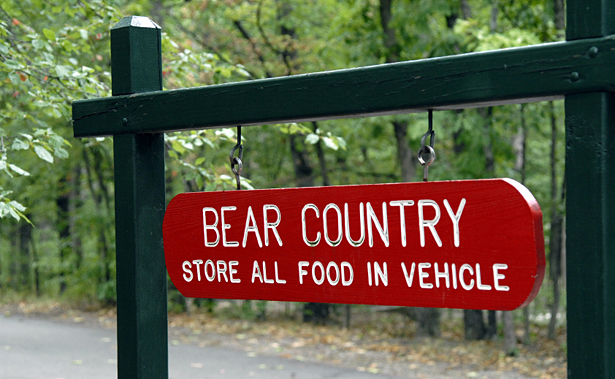How to Avoid Getting Eaten by a Bear and Other Outdoor Safety Tips

It’s no accident that Dr. Aram Attarian is an expert on camping and outdoor adventure safety. Attarian, a professor of parks, recreation and tourism management at NC State University, has spent 35 years collecting accident reports, first-person accounts and newspaper articles about when things went wrong in outdoor and adventure programs.
This year, he combined more than 50 scenarios involving lightning strikes, wildlife encounters and lost students, in Risk Management in Outdoor and Adventure Programs, a book for use in outdoor leadership and adventure education classes.
His observations can also help those of us who enjoy hiking, camping, climbing, rafting and other outdoor pursuits.
His first recommendation: “Do your homework up front.” That starts with researching the location, checking the long-term weather forecast and selecting the right equipment for the trip.
Here are tips to keep you out of a future edition of Attarian’s book, which is divided into sections for each major contributing risk factor: program staff and participants, environmental conditions, equipment and transportation.
Program Staff and Participants
“Be prepared, both mentally and physically, for your trip,” Attarian says.
If you’re getting ready for a new outdoor activity or a destination trip, start a routine of walking or running a few months ahead. For two popular activities, backpacking and climbing, “it’s all legs and lungs. You need to have a good attitude as well.”

For example, head out to Umstead State Park to get accustomed to a heavy backpack or to break in new boots. Train at an indoor rock wall before attempting a more challenging climb. Make sure you’re in good physical shape so that you aren’t risking a heart attack on the whitewater rafting trip.
Mentors, whether experienced family members or professional guides, can help match your skill level to the activity and its risks.
The most common outdoor injuries are musculoskeletal, such as sprained ankles or wrenched knees, followed by soft tissue injuries, such as abrasions, contusions and lacerations. Make sure you carry a first aid kit and a communication device.
“Leave your itinerary with someone, with a day-by-day plan, so that if you’re late showing up, searchers will know where to start,” Attarian says.
Environmental Conditions
Weather, stream and river crossings, and interactions with wildlife are just a few of the biggest environmental concerns.
Attarian, who was knocked unconscious by ground current during a lightning strike, is well aware of North Carolina’s status as one of the top five states for lightning danger.
If a thunderstorm approaches, head from a high- to a low-risk environment by seeking shelter in a building or metal vehicle. If you’re caught in a storm, assume a lightning stance: Put your pack on the ground and crouch on top. Wait half an hour after the storm passes to resume activity.
You should also be aware of wildlife in the area. Before your trip, find out if there’s a history of bears in the area and pay attention to park authorities and warning signs.
“If you’re going to an area where encounters between humans and bears are common, such as Glacier, Yellowstone or Yosemite, take bear bells and pepper spray with you and be bear aware,” Attarian says.
Equipment
Technology has made outdoor adventures easier and more pleasant with lighter equipment, high-tech materials and even solar panels to charge your cell phone.
However, communications gear can provide a false sense of security.
“We all have cell phones, but they don’t work everywhere,” Attarian says. “For example if you’re down in Linville Gorge, you may have to hike to the top to get reception.”
Some leaders of large groups carry satellite phones. Another option is personal locator beacons, which work like GPS devices in an emergency. Once activated, the device sends a signal to an overhead satellite, which is passed on to authorities.
While GPS can come in handy, Attarian recommends carrying a map and compass for navigation. “You need to have a plan if your battery dies or the signal is blocked by a heavy tree canopy.”
Transportation
Despite his research on the risks of being outdoors, Attarian remains positive about its benefits.
“Some would argue that travel to and from the location is the most dangerous part of any outdoor recreation experience,” he notes.
- Categories:


